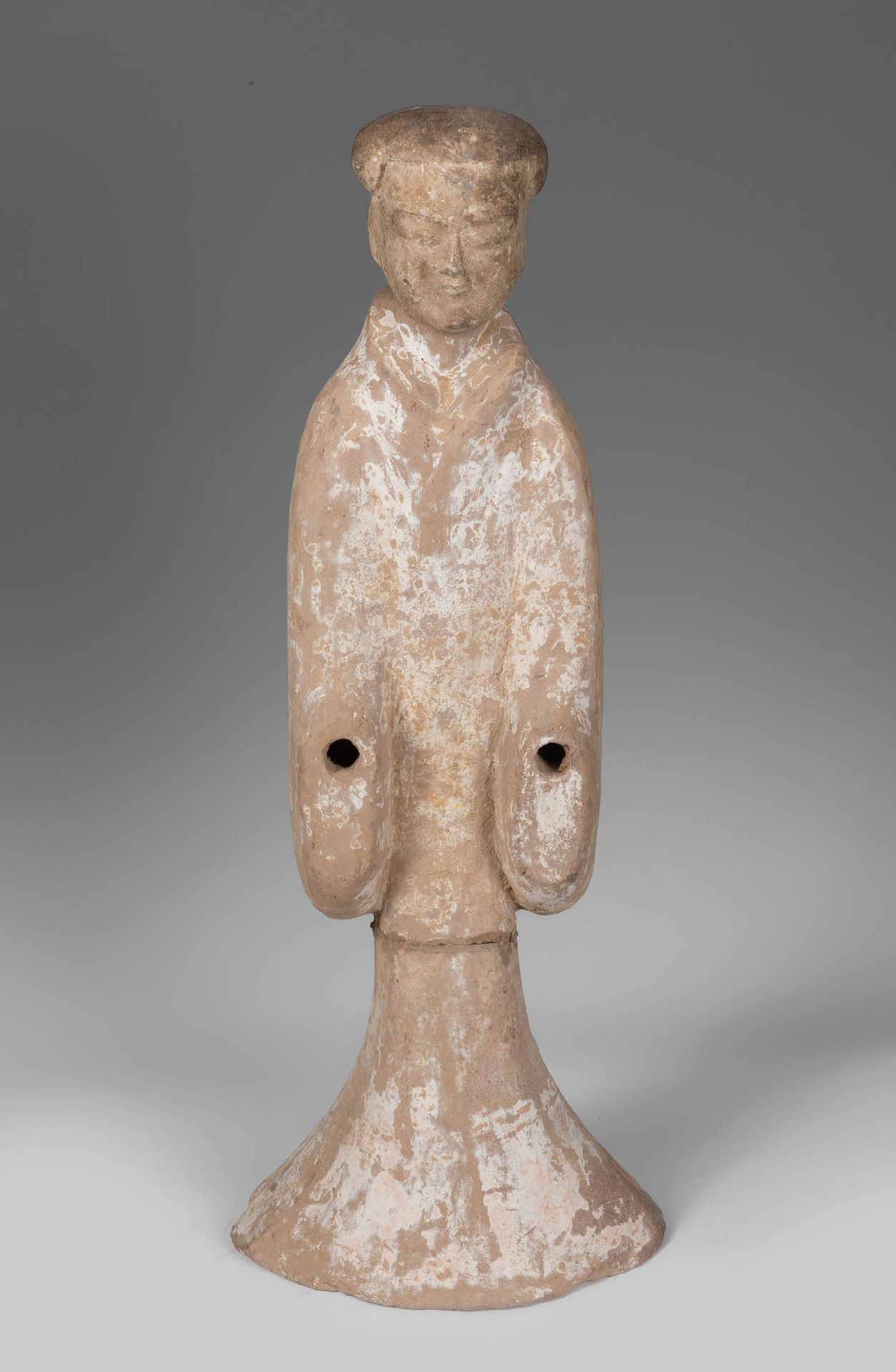Description
Court lady. China, Han Dynasty, 206 BC-220 AD. Terracotta. Size: 66 x 25 x 14 cm. High quality figure, representing a court lady in a reverent position, made in terracotta. The figure has a completely detachable head, supported by a cylindrical wooden structure that connects with the body of the piece. The sculpture originally retained the hands, which had the same fastening system as the head. The Han dynasty ruled China for more than four centuries, during which the political, social and economic structures of China were consolidated, leading the country into the most glorious period of its history. The art of this period is still predominantly funerary, although it reflects the very high artistic level that would be reached in both the capitals and the provinces. These preserved objects provide us with information about the daily life and customs of the time, as the art becomes much more mundane than the bronzes of the Zhou and Shang periods. The structures of the tombs also changed: the Shang tombs were vertical, while the Han tombs were built in the form of underground palaces. They were decorated with reliefs stamped with scenes from the life of the deceased, and a new material, lacquer, was introduced as an artistic medium. Most famous today, however, is the production of Han pottery, made of terracotta and decorated with cold-applied engobes, mainly black and red.
16
Court lady. China, Han Dynasty, 206 BC-220 AD. Terracotta. Size: 66 x 25 x 14 cm. High quality figure, representing a court lady in a reverent position, made in terracotta. The figure has a completely detachable head, supported by a cylindrical wooden structure that connects with the body of the piece. The sculpture originally retained the hands, which had the same fastening system as the head. The Han dynasty ruled China for more than four centuries, during which the political, social and economic structures of China were consolidated, leading the country into the most glorious period of its history. The art of this period is still predominantly funerary, although it reflects the very high artistic level that would be reached in both the capitals and the provinces. These preserved objects provide us with information about the daily life and customs of the time, as the art becomes much more mundane than the bronzes of the Zhou and Shang periods. The structures of the tombs also changed: the Shang tombs were vertical, while the Han tombs were built in the form of underground palaces. They were decorated with reliefs stamped with scenes from the life of the deceased, and a new material, lacquer, was introduced as an artistic medium. Most famous today, however, is the production of Han pottery, made of terracotta and decorated with cold-applied engobes, mainly black and red.
